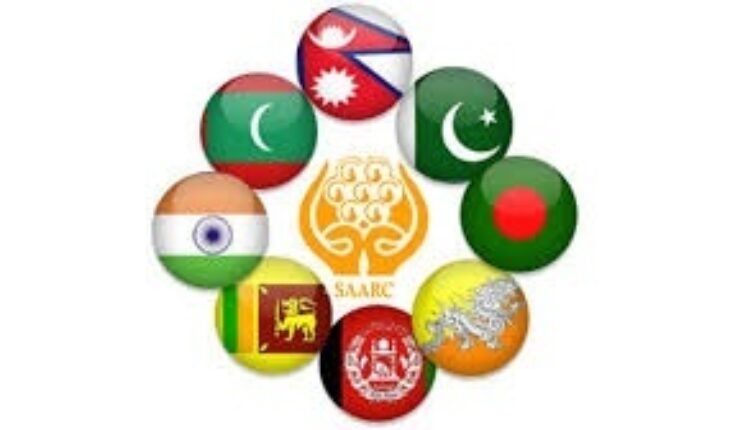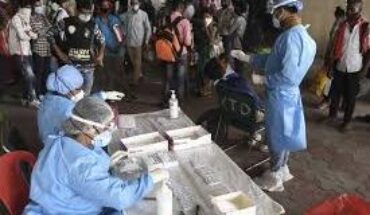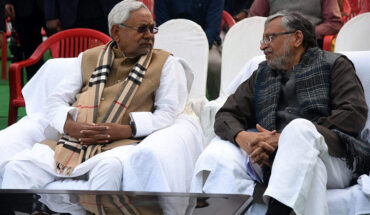Under a fixed exchange rate system, devaluation and revaluation are official changes in the value of a country’s currency relative to other currencies as decided by a country’s government or monetary authority as per International Monetary Fund (IMF). When market forces generate changes in the value of the currency, then it is termed as depreciation or appreciation. Devaluation is the deliberate downward adjustment in the official rate, thereby reducing the currency’s value. In contrast to this, a revaluation is an upward change in the currency’s value. To put it in Indian context, Indian rupee has been devalued thrice: 1949, 1966 and 1991 whereas depreciation or appreciation takes place due to market forces on routine basis.
Devaluation and depreciation of a country’s currency with reference to other currencies can affect the prices of products in that country especially of those products for which import intensity is higher as imports become dearer. Impact will vary as per amount of devaluation or depreciation of the currency. Other economic conditions such as foreign exchange (forex) reserves, balance of payment conditions, etc. also influence export and import. As major part of international trade takes places in hard currencies so it becomes essential to see the devaluation or depreciation of any currency’s value with reference to the U.S. dollar or other hard currencies. In 2023, the most devalued currencies’ list included Lebanese pound on the top with a decline of 89.89% in 2023 against U.S. dollar. Other currencies in the list were – Argentine peso (- 77.89%), Nigerian naira (- 42.57%), Angolan kwanza (- 39.05%), Malawi kwacha (- 39.00%), and Turkish lira (- 35.51%). In recent years, eight countries namely Afghanistan, Bangladesh, Bhutan, India, Maldives, Nepal, Pakistan and Sri Lanka which are part of the South Asian Association for Regional Cooperation (SAARC) have witnessed huge exchange rate fluctuations. Out of eight SAARC countries, only India has a well established pharmaceutical sector and is often hailed as ‘the pharmacy of the world’. Bangladesh is also catching up in various areas, and domestic industry of Bangladesh is able to cater to 97 per cent of the domestic demand.
In the fiscal 2023-24, India’s drugs and pharmaceuticals exports touched US $ 27.9 billion with a year-on-year increase of 9.67 per cent. Export of Drugs & Pharmaceuticals from India to SAARC nations was US $1.14 billion in 2023-24 which formed 4.08 per cent of total drugs and pharmaceuticals exports from India. In rupee terms, pharma exports from India for 2023-24 stood at Rs. 2.30 lakh crore with a year-on-year growth of 13 per cent as exports for 2022-23 stood at Rs. 2.04 lakh crore. During 2023-24, India’s imports of bulk drugs and intermediates were of Rs. 37,721.88 Cr. including imports of Rs. 27,055.22 Cr. from China. Hence, exchange rate fluctuations pose challenges for pharmaceutical sector due to heavy exports and imports of pharmaceuticals. Depreciation of Indian currency became critical as Indian Rupee depreciated 7.8% in FY23, the most since 2019-20. Indian Rupee had ended 2022 as one of the worst performing Asian currencies with a fall of 10.14% which was the biggest annual decline since 2013.
Table1: Export of Drugs & Pharmaceuticals from India to SAARC nations
Amount (In US $ Mn)
| Country | Export of Drugs & Pharmaceuticals | ||
| FY22 | FY23 | FY24 | |
| Sri Lanka | 234.94 | 248.03 | 297.41 |
| Nepal | 323.98 | 257.15 | 270.23 |
| Bangladesh | 308.69 | 261.86 | 267.23 |
| Pakistan | 243.84 | 191.36 | 176.54 |
| Afghanistan | 67.96 | 92.32 | 90.19 |
| Maldives | 29.79 | 33.44 | 32.70 |
| Bhutan | 8.43 | 8.19 | 8.25 |
| Total | 1217.63 | 1092.35 | 1142.55 |
Source: Compiled from National Import-Export Record for Yearly Analysis of Trade portal; and Pharmexcil (2023).
From 2001 to 2023, Pakistani Rupee (PKR) has depreciated in 19 out of 23 years. Year 2023 emerged as the fourth-worst after 2008, 2018, and 2022. PKR has seen a cumulative fall of 19.7 per cent in the calendar year 2023 and closed the year at 281.86 against the US dollar (1 USD = 278 PKR on May 25, 2024). Impact on availability of medicines and the prices of medicines was visible, e.g., Paracetamol products were in short supply since the beginning of Covid-19. Pakistan imports about 95 per cent of its pharmaceutical raw materials from China, Germany, and India. Pakistan’s direct trade with India remained suspended since August 5, 2019 and indirect trade continued via Dubai. Pakistan imported drugs and pharmaceuticals from India worth $176.54 Mn in FY24. In early 2023, around 40 manufacturers informed the Drug Regulatory Authority that they will stop the production due to the rising cost of raw materials (Active Pharmaceutical Ingredients, Key Starting Materials, and Drug Intermediates) in the international market. Depreciation of the PKR further added to the woes. One USD was equal to about Rs. 140 in 2018, Rs. 188 until April 2022, and due to the depreciation of the PKR, USD was almost equal to PKR 270 by February 2023. The PKR became one of Asia’s weakest currencies. Multiple factors such as ‘balance of payments crisis’, ‘inability to secure external financing’ and ‘depleting foreign exchange reserves’ contributed to their currency’s decline. The Pakistan Pharmaceutical Manufacturers Association demanded a 38 per cent hike in prices when USD was PKR 235, and by the time, it became equal to PKR 286, they felt even 38 per cent hike will not be sufficient. Hence, dollar-rupee disparity made their business economically non-viable.
Due to rejection of demand for price hike, importers either “stopped” or “drastically reduced” the imports of about 100 crucial medicines. Imports norms bind an importer to not ‘completely stop importing medicines’ for which importer has been granted a license so most of the importers started importing a ‘minimum quantity’ of dozens of essential and non-essential medicines. It was being resorted to save the license from being cancelled. To deal with the situation, the Economic Coordination Committee (ECC) of the Cabinet allowed the fixation of Maximum Retail Prices (MRPs) of 18 new drugs as recommended by Drug Pricing Committee (DPC). To justify hike, the ECC stated that the prices of these 18 new drugs were at the lowest as compared to the prices of the same drugs in neighbouring countries, especially in India. Heavy dependence on imports for raw materials of drugs, depreciation of the PKR and impact on medicine prices is clearly evident from this. In September 2023, the government approved a 14 per cent price hike for essential medications, and a 20 per cent hike for non-essential medicines. Besides this hike, the Pakistani government had given 15 such drug price hikes during the past five years. There were reports on ‘shortage’ and ‘disappearance’ of over 200 medications comprising lifesaving and essential drugs and non-availability of about 100 lifesaving drugs in hospitals. Drugs were available in black market as nearly 100,000 illegal merchants were selling medications in Pakistan which has about 4,000 licensed pharmacies for the country which is fifth-most populous country on the earth.
Sri Lanka is dependent on imports of pharmaceuticals. Impact of exchange rate fluctuations can be understood from the fact that US $ was equal to LKR 176.47 on May 27, 2019 and US$ was worth LKR 364.54 on May 11, 2022 as Sri Lankan economy faced the major economic crisis in 2022. Prices of certain drugs went up to the tune of 97 per cent, and also, the prices of certain other drugs such as antibiotics, medications for heart conditions, certain painkillers went up by about 40 per cent in April 2022. During this period, India extended a currency swap of USD 400 million to the Central Bank of Sri Lanka (CBSL) and also deferred dues of Asian Clearing Union and SAARC Swap amounting to USD 2.5 bn. More than 26 tons of drugs and other medical supplies were provided to medical institutions in April-May 2022 to meet the acute shortage of medicines. In first four months of 2024, Sri Lankan rupee has appreciated by 9.1% against the USD, 12.7% against the Euro, 10.8% against the UK pound, and 9.5% against the Indian Rupee, and current exchange rate with USD stands at LKR 299.59. It is still higher by 48.16% in comparison to the exchange rate on February 25, 2022 when USD was worth LKR 202.20. A prominent industry association – All-Island Private Pharmacy Owners’ Association (AIPPOA) sought abolition of price control on 60 specific medicines in March 2024. Due to increase in import cost, it asked for adoption of unified pricing mechanism based on the Cost, Insurance, and Freight (CIF) values. The rationale behind the appeal is evident as the country relied on imports for about 85% of its pharmaceutical requirements and about 80 per cent of its medical supplies by October 2022. Three upward revisions in prices since 2021 (9% in 2021, 29% & 40% in 2022) were attributed primarily to devaluation of the currency in 2021.
Maldives with a population of about 3.3 lakh dispersed over 198 small islands has only four islands which have a population exceeding 5,000. 72 of the islands have a population of less than 500 persons. During Covid-19 pandemic, India provided financial assistance of US $250 million to Maldives. Aasandha, their Universal Healthcare Insurance Scheme, provides for treatment of Maldivians in India. On May 9, 2024 Maldivian Foreign Minister met India’s Finance Minister Dr. S. Jaishankar, and sought debt rollover that was due for repayment on May 15. Another US $50 million is due for repayment in September 2024. The Maldivian Rufiyaa is pegged against the US dollar, and exchange rate has been fixed as MVR 15.42 per US $. In a situation where the country will have more currency in circulation then it will cause devaluation of the currency. In 2nd week of May 2024, the International Monetary Fund (IMF) had urged Maldives to stop printing money. Current Account deficit in 2023, foreign borrowings, high debt to GDP ratio (118 per cent) and depletion of forex reserves from US $832 Mn 2022 to US $589 Mn in 2024 remain key concerns for Maldives.
Medicines approved by the Maldives Food and Drug Authority (MFDA) are imported into the Maldives, and these medicines fall in three Lists, i.e., List 1 (Registered Products List) of 1,711 products, List 2 (Primordial Products List) of 1,199 products, List 3 (Pre-Authorisation List) of 1,978 products and List 4 (Radio Contrast Media) of 13 products. F. Najeeb (2023, July) in a paper on dynamics of import of pharmaceutical products into Maldives shared that of List 1 (1,711 products) in 2022, 46% were manufactured in India, 22% in Malaysia, 8% in Pakistan, 4% in Bangladesh, 3% in the UK, 2% each in Switzerland, Sri Lanka, Indonesia, Belgium and 1% each in Germany and France. List 2 was dominated by India with 59% share, and in list 3, 85% of the products were from India. Pharmaceutical imports by Maldives increased from MVR 85.7 million in 2006 to MV 832.1 million in 2022. In 2017, imports of medicines stood at MVR 402.7 million and reached US MVR 879.7 in 2021. India remained top supplier of medicines for all these 17 years from 2006 to 2022. Due to pegging of MVR with US dollar, exchange rate fluctuations are favourable to Maldives but increase in imports of medicines and dependence on foreign countries for imports is definitely a major concern.
Afghan Afghani claimed the title of ‘the world’s best-performing currency’ during the September quarter of 2023 with a surge of 9 per cent in value against dollar. It was attributed to factors such as increase in humanitarian aid, expansion of trade activities, prohibition of the use of US dollars and Pakistani currency in local transactions, etc. On May 26, 2024, US $ traded for AFN 58. From May 27, 2019 to August 6, 2021 one US Dollar was approximately equal to AFN 80. Afghani currency depreciated due to political uncertainty and change of the regime in 2021. Media reports highlighted that in December 2021, prices of medicines which used to cost 200 or 300 AFG, went up to 600 or 700 AFG. Afghanistan’s Pharmacy Union had attributed the hike in prices to the weak Afghani against the US dollar. In addition to exchange rate, low supply, high demand, and low imports of medicines played havoc. On January 18, 2022, one US dollar was equal to AFN 104.83. By July 2023, the country had over 50 pharmaceutical firms manufacturing about 550 medicines as per the Afghanistan Food and Drug Authority (AFDA). Head of AFDA pointed out that 30% of medicines were imported into the country illegally. 70% of domestic requirements were met through imports. In 2022, the country had 196 wholesalers, 156 import businesses, 10 factories, 142 branches of importing companies and manufacturing factories. 1,844 technical officials had the licence to operate. Import permits for the period were granted for 21,504 different types of medicines and health items. India exported drugs and pharmaceuticals worth US $92.3 million to Afghanistan. As per the National Import-Export Record for Yearly Analysis of Trade (NIRYAT) portal, drugs and pharmaceuticals accounted for 21% of the total exports from India to Afghanistan in FY23. In FY24, Afghanistan imported medicines worth $39.8 million during April 2023-August 2023. It is notable here that Indian Rupee is worth AFN 0.86 in last week of May 2024 whereas on January 1, 2022 one INR was equal to AFN 1.3927. Depreciation of Afghani in 2021-22 affected the import cost of medicines. Due to appreciation of the Afghani currency now, favourable impact is likely on import cost.
India exports 30 per cent of total Active Pharmaceutical Ingredients (APIs) exports to Bangladesh. Domestic pharmaceutical industry of Bangladesh caters to about 97 per cent of the country’s domestic demand. Their companies are exporting medicines to 145 countries including highly regulated markets such as Australia, and European Union. Due to high dependence on API imports (stated to be 97%) and depreciation of domestic currency, cost of inputs increased substantially. In Bangladesh, exchange rate of domestic currency has fluctuated against US dollar from US $=TK84 in May 2019 to US $=TK117 on May 26, 2024. Representatives of the Bangladesh Association of Pharmaceutical Industries (BAPI) expressed the concern on increased cost of API imports to the Directorate General of Drug Administration (DGDA) and sought price increase.
Nepal established the Department of Drug Administration (DDA) in 1979. Final Report on Detail Study of Pharmaceutical and Medicine Manufacturing Industries in Nepal (2021, May) observed that market share of domestic production was 46% (up from about 30 per cent in 2005); medicine imports from India formed 52%, and other countries had just 2% share. Nepal imported vaccines, biotechnological products, modern technology related medicines used for anti-cancer, critical care, etc. Nepal was importing 70-75% of raw materials from India, and 25-30% from China. Heavy reliance on imports mainly from India and China reflects the impact of foreign exchange rate fluctuations on domestic prices of imported medicines. But there is twist to this. Foreign exchange rate between Indian Rupee and Nepalese Rupees (NPR) since May 27, 2019 has remained almost same, i.e., 1 NPR equals to 0.6248 INR. Underlying reason is that Nepal pegs its currency (Nepalese rupee or NPR) to Indian Rupee. Peg had remained unchanged since 1993 and prior to that, there were marginal changes on account of revaluation from time to time. Under the pegged exchange rate, the value of Nepalese rupee is fixed to India’s Rupee and market forces do not play any role which is observed in case of free floating currencies. Hence, Nepal is more or less immune from changes in foreign exchange fluctuations due to pegging of NPR to Indian rupee and majority of imports from India only.
Bhutan had a population of about 800,000 by 2022. Pharmaceutical exports from India in FY24 to Bhutan were just $8.25 million, least among SAARC nations. Bhutan introduced Ngultrum (Nu) as currency in 1974 which was pegged at par with the Indian Rupee. Ngultrums and INR is accepted as legal tender in Bhutan. Due to pegging of Bhutanese Ngultrums with INR, and import of medicines from India, exchange rate fluctuations do not have significant impact on medicine prices in Bhutan.
To conclude, growth rate of exports of drugs and pharmaceuticals from India was higher at 13 per cent in rupee terms that can be partly attributed to depreciation of the currency. Depreciation of Pakistan rupee affected availability as well as price of those medicines for which they rely on imports. Sri Lanka also faced the similar situation. In case of Bangladesh, prices of those pharmaceutical products rose for which the country is dependent on import of their APIs. Maldivian Rufiyaa is pegged to US $ so exchange rate fluctuations were favourable to Maldives but dependence on foreign countries for import of medicines remains a major concern for the country due to depleting forex reserves. Currency of Nepal and Bhutan is pegged to Indian rupee, and their medicine imports are mainly from India so there is no visible impact on prices or availability. Afghanistan’s currency has appreciated so that is a positive for their economy’s imports but depleting forex reserves remain a concern.
Dr. Anil Kumar Angrish,Associate Professor (Finance and Accounting),Department of Pharmaceutical Management, NIPER, SAS Nagar (Mohali), Punjab
Disclaimer: Views are personal and do not represent the views of the Institute.






